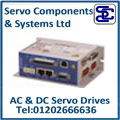
Posted to News on 30th Apr 2008, 16:33
How to choose the right type of locking fastener
This article from Spiralock presents four things that engineers need to know about choosing locking fasteners that can result in better, more reliable assemblies.

In the world of engineered components, fasteners are not the first thing engineers think about. Fasteners are not exciting, and they are commonly treated as routine. But choose the wrong fastener for an application and the best laid engineering plans and products can fall apart.
In today's ultra-competitive, litigious, cost-conscious manufacturing environment, engineers need every advantage to set themselves apart from the competition and prosper. What follows are four things engineers must know about locking fasteners to keep their products and careers securely in the fast lane.
1) Focus on retaining fastener tension, not torque assembly methods
Bolt tension, which causes the bolt to stretch, is what actually keeps a joint together. Yet 90 per cent of the torque applied to a bolted joint goes not into fastener tension, but into overcoming friction. This is one reason that breakaway torque is not a reliable measure for determining joint integrity or tension.
Though friction is necessary to hold a bolted joint together, excess friction can damage threads or cause galling, known as thread freezing, especially among fasteners made of stainless steel, aluminium, titanium and some other alloys. Achieving the proper joint tension is challenging.
Testing with standard threads has shown that for a given torque, bolt tension can vary as much as 50 per cent. This is why torque recommendations are guidelines, not 'cast in stone' values. Many factors affect bolt tension when torque is applied, including the hardness of all parts, surface finishes, material types, plating, lubricants, tightening speed, thread fit and surface pressures.
Even when sophisticated manufacturers use torque wrenches and other tools in assembly, the only way to determine the ideal torque for an application is through testing. This can be effectively done by measuring bolt stretch manually or ultrasonically, by using a load cell to measure bolt tension at a certain torque/angle, or by other means.
2) Treat your fasteners with the same care you would your most critical component
No matter how clever the engineering or robust the components, the end product is only as reliable as its weakest link - which, all too often, are the fasteners. While fasteners are often viewed as commodities, they are more than this - especially in any critical application where failure could be costly or disastrous. In these cases, the basics of strength, size, material and service requirements must be reliably and efficiently handled; and locking fasteners are often called for.
But how do you choose the right locking fastener type for the job when tradeoffs are involved? Engineers must understand the relative advantages and disadvantages of different fastener types.
3) Choose the right type of locking fastener for the job
Among the various types of fasteners and tooling, some offer specific advantages for certain applications. For instance, among fasteners, wire inserts can add strength or aid in repairing stripped threads in soft materials. Clinch nuts are good for adding grip length and thread engagement when used with thin materials. Threaded inserts help create a stronger, metallic interface for fasteners in thinner, weaker materials like aluminium, plastic and wood. And Hex flange nuts can add strength to the fastener or spread the load over an increased surface by adding a bearing surface. Some elaborately machined fasteners such as spanner nuts, collar nuts or captive washer nuts can also be useful in specialised applications.
Tooling such as taps, gauges, thread milling cutters or threading inserts also have their place, depending on the capabilities of a manufacturer's processing equipment. A carbide insert, single-point cutter, or a thread milling cutter will give the best thread finish and tool life, for example.
Thread milling or thread turning provide better thread quality than tapping because tapping shears away more material under less favourable conditions. In milling or turning, less material is sheared away in a more open environment. Because the sheared chips flow more freely and the coolant circulates better, there is less surface contact at any one time and therefore less friction and heat build-up. Better chip management translates into better surface finish, less galling, easier assembly and longer tool life.
Thread milling cutters are particularly good for jobs where larger thread diameters are required. They save handling, set-up and machining time by cutting the thread in the machining centre with improved thread quality.
Where tapping is necessary, cold forming tapping is preferable since the process generates threads by displacing material rather than by cutting. Therefore no metal chips are generated and no cutting edges wear down. Cold form tapping is popular in softer, more malleable materials like some steels and stainless steels as well as in aluminium, brass and copper. Due to displacement of material to create the threads in cold form tapping, however, a dimensional allowance must be made on the drilled hole prior to tapping.
When tapping, it is also a good idea to avoid blind holes. The reason for this is that once a tap gets into the bottom of the hole, there is a lot of heat build-up and little available coolant. To minimise this concern, it is best to use the minimum threading agent necessary for the design process.
A number of online tools can help engineers find the best locking fastener or tooling for the application. Among these are: an online Tap Selection Tool; Torque Calculator; Drill and Hole Size Calculator; and Tap Troubleshooting Guide. All of these can be found on the technology page at www.spiralock.com. The Tap Troubleshooting Guide, for instance, can help walk engineers through an issue such as when a go-gauge does not go, which can be a sign that a tap is wearing down or getting poor tool life. It can also help engineers spot when too much tension is being generated in the tapping process.
4) Consider lifetime cost including design, assembly, warranty and liability
While many engineers gravitate toward lock washers, prevailing torque fasteners, adhesives or other common choices, these may be inappropriate or have considerably higher total costs over the product lifecycle.
Split washers, lock washers, and lock wires, for instance, add extra weight and complexity to component design. They also increase the chance that something may go wrong during assembly or maintenance, as well as complicate inventory control. Other mechanical locking features such as brackets can also prove costly and tedious to use on components with multiple bolts. If not properly fastened during assembly, maintenance or rebuilds, they can pose a quality assurance risk.
Since prevailing torque fasteners can damage threads, these often prevent reuse while raising labour and maintenance costs. Due to high resistance during assembly, they are prone to galling and require more effort to ratchet down using special tools.
Locking adhesives, for their part, progressively lose effectiveness as temperature rises. In high volume, their use typically requires a large capital expense to purchase and program robot applicators. And when re-application is necessary, cleaning the threads of affected components takes added time and labour before re-application is possible.
Bolts secured with single-use, drypatch adhesive - activated when the bolts are tightened - can similarly add to assembly, maintenance or warranty costs. This is because, once used, the bolts must be replaced for any necessary rebuilds or maintenance. Affected internal threads must also be cleaned before new bolts with drypatch adhesive can be applied, adding to time and labour costs.
Most importantly, however, these and other locking fasteners do not address a basic design problem with the standard 60-degree thread form: that the gap between the crest of the male and female threads can lead to vibration-induced thread loosening. Stress concentration and fatigue risk at the first few engaged threads is also a problem, along with an increased probability of shear, especially in soft metals, due to its tendency toward axial loading. Temperature extremes can also expand or contract surfaces and materials, potentially compromising joint integrity.
Engineers, however, have successfully attacked these challenges while reducing component weight and enabling re-usability up to 50 times with the innovative Spiralock locking fastener. This re-engineered thread form adds a 30-degree wedge ramp at the root of the thread that mates with standard 60-degree male thread fasteners.
The wedge ramp allows the bolt to spin freely relative to female threads until clamp load is applied. The crests of the standard male thread form are then drawn tightly against the wedge ramp, eliminating radial clearances and creating a continuous spiral line contact along the entire length of the thread engagement. This continuous line contact spreads the clamp force more evenly over all engaged threads, improving resistance to vibrational loosening, axial-torsional loading, joint fatigue and temperature extremes.
The Spiralock locking fastener has been validated in published test studies at leading institutions including MIT, the Goddard Space Flight Center, Lawrence Livermore National Laboratory and British Aerospace. It has been used in thousands of applications to solve design challenges in a wide range of industries including automotive, heavy truck, aerospace/military, medical, agriculture, construction, rail, oil drilling and food processing. Production changeovers to this fastener are typically quick and seamless, often requiring just an exchange of traditional nuts, wire inserts or simply drilling out and re-tapping existing stocks of parts that have standard tapped holes.
For engineers beset by design, budgetary and competitive challenges, keeping the above four tips about locking fasteners in mind can pay dividends.
For detailed test data, including comparative graphic loading characteristics and photoelastic analysis/load vector comparison animations, visit Spiralock at www.spiralock.com or email [email protected].















